Geophysics
Following the development of a research concentration in Geochemistry during the 1990s, the University of Maryland, College Park, began to develop a research program in Geophysics. At present, the geophysics research group investigates the physical processes and structure of the Earth and planetary interiors. Using computational modeling, laboratory experiments, and observations streaming in from geophysical instruments around the globe, Maryland's geophysicists are working to understand planetary processes at all depths, from near-surface conditions to the deep interior.
Research areas include:
- Deformation of the Earth's lithospheres, including earthquakes, postseismic creep, and the origin of plate boundaries and triple junctions;
- Nature and controls on rock strength, fracture, friction and ductile flow during tectonic loading, including quantification of evolving microstructures and pore distributions in a deforming rock to reveal fundamental hydro-chemo-thermo-mechanical couplings;
- Seismic imaging of Earth's crust and mantle, using full waveform tomography and imaging with converted/scattered waves;
- Mantle flow and development of seismic anisotropy at subduction zones;
- Thermal evolution of planetary interiors, including icy satellite;
- Mechanisms of extraction of magma from the mantle to the surface at plate boundaries such as mid-ocean ridges, subduction zones, and continental rifts, as well as hotspots;
- Evidence for magmatism in planetary lithospheres and icy crusts;
- Dynamics of metallic cores and generation of planetary magnetic fields.
Research Facilities:
Geodynamics Research Laboratory
Laboratory for Rock Physics
Nonlinear Dynamics Laboratory
Seismological Laboratory
Graduate Program:
Interested students are encouraged to apply to our graduate program. There are opportunities for graduate study in geophysics for students having a variety of backgrounds, especially those with degrees in the physical sciences, mathematics, computer science, or engineering.
Resident Geophysics Faculty:
 Daniel Lathrop
Daniel Lathrop Experimental geophysical fluid dynamics, superfluid turbulence, magnetorotational instability, magnetoturbulence and dynamos, and strongly nonlinear surface waves.
(Nonlinear Dynamics Laboratory)
 Ved Lekic
Ved Lekic Structure of Earth's crust and mantle, attenuation of seismic waves, full waveform tomography, scattered/converted wave imaging, earthquake source characterization.
(Seismological Laboratory)
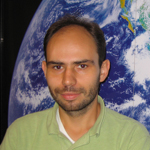 Laurent Montési
Laurent Montési Earth and planetary surface deformation (mountain belts, rifting, and the influence of faults; localized deformation on shear zones). Computational models of lithospheres of terrestrial planets.
(Montési Geodynamics)
 Wen-lu Zhu
Wen-lu ZhuExperimental rock physics; laboratory and theoretical studies on deformation and percolation of crustal rocks; transport properties of hydrothermal vent deposits; submarine geomorphology.
(Laboratory for Rock Physics)
Adjunct Geophysics Faculty:
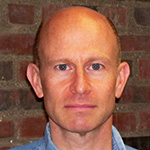 Andy Campbell (University of Chicago)
Andy Campbell (University of Chicago) Constraining physical and chemical properties of materials under high pressure and high temperature conditions, in order to better understand the constitution, structure, and evolution of the Earth's interior.
(Laboratory for Mineral Physics)
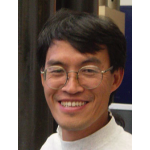 Yingwei Fei (Carnegie Institution of Washington)
Yingwei Fei (Carnegie Institution of Washington)Formation and chemical composition of planetary interiors, physical properties of planetary materials at high pressure and temperature, and material synthesis at high pressure.
(High-Pressure Lab)
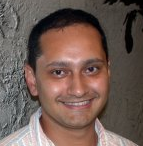 Saswata Hier-Majumder (Royal Holloway, University of London)
Saswata Hier-Majumder (Royal Holloway, University of London)Theoretical modeling of multicomponent fluid dynamics in problems of geophysical interest. Segregation and transport of melt in the mantle. Experimental determination of the influence of water on the kinetic properties of silicates.
 James Roberts (Applied Physics Laboratory / Johns Hopkins University)
James Roberts (Applied Physics Laboratory / Johns Hopkins University)Planetary geodynamics, mantle convection, elastic flexure, and viscoelastic relaxation on the terrestrial planets and icy moons of the solar system.
(Applied Physics Laboratory)
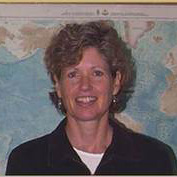 Deborah Smith (Woods Hole Oceanic Institution)
Deborah Smith (Woods Hole Oceanic Institution) The construction and evolution of the oceanic crust. The controls on spreading at mid-ocean ridges. The stresses associated with the development of divergent plate boundaries. The nature and stability of triple junctions. Microplates and their role in mid-ocean ridge spreading processes.
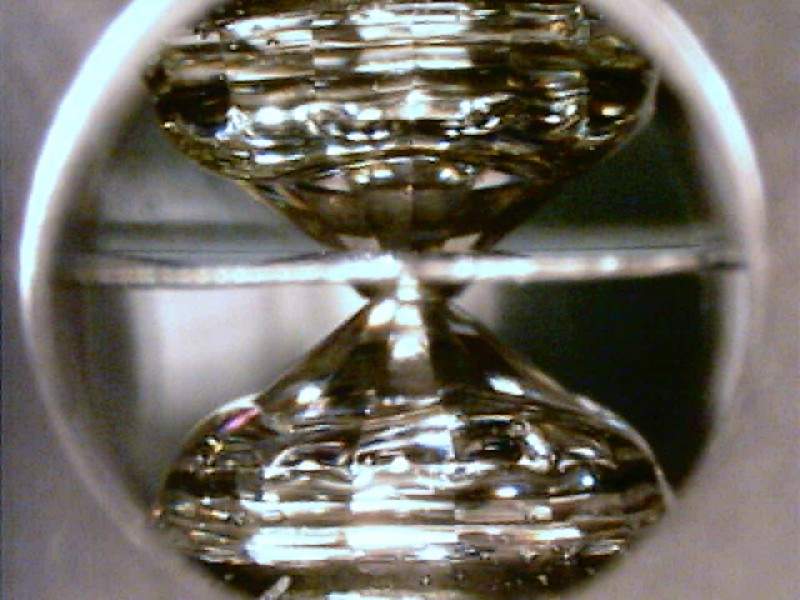 Diamond anvil high pressure cell. The sample is compressed between two diamonds, to pressures reaching those of the Earth's core.
Diamond anvil high pressure cell. The sample is compressed between two diamonds, to pressures reaching those of the Earth's core.
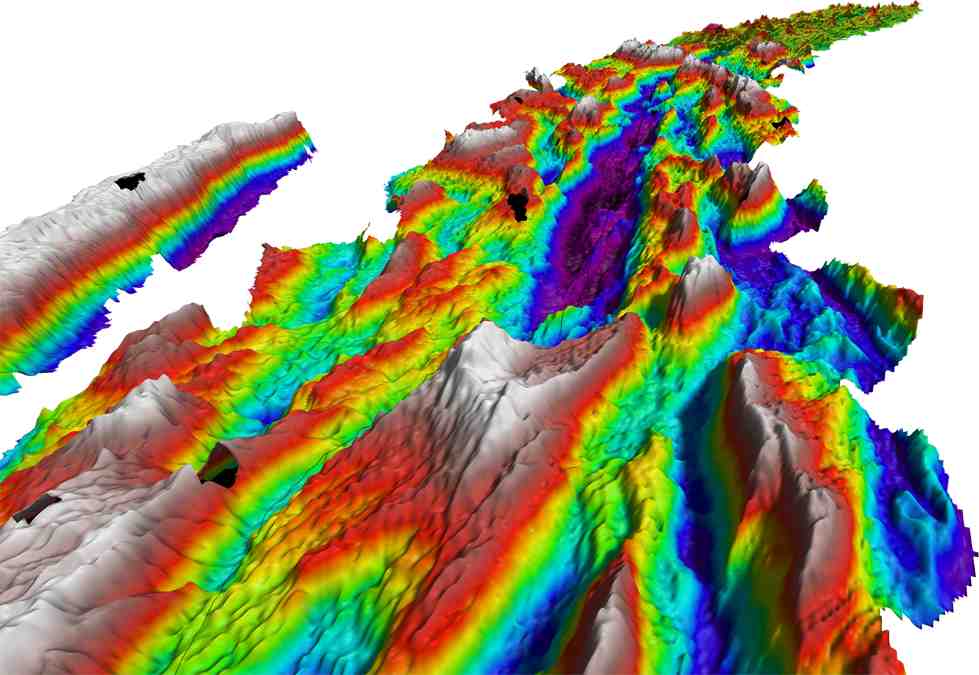 Bathymetry of the ultraslow Southwest Indian Ridge at 9-16˚E. Magma is focused to narrow seamounts like Joseph Mayes Seamount in the foreground.
Bathymetry of the ultraslow Southwest Indian Ridge at 9-16˚E. Magma is focused to narrow seamounts like Joseph Mayes Seamount in the foreground.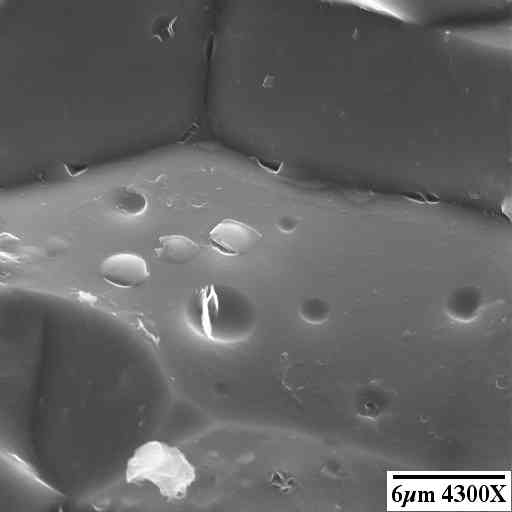 Pockets of water-rich melt in an olivine matrix. These experiments demonstrate how melts can be retained in the mantle.
Pockets of water-rich melt in an olivine matrix. These experiments demonstrate how melts can be retained in the mantle.
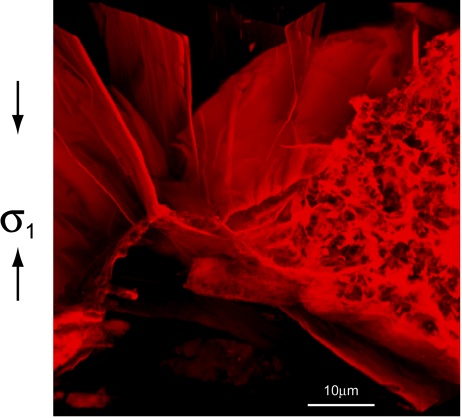 A laser confocal image of Hertzian fracture and grain crushing in porous sandstone.
A laser confocal image of Hertzian fracture and grain crushing in porous sandstone.
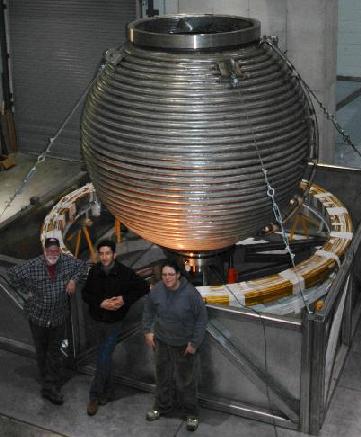 Laboratory model for probing MHD turbulence and liquid metal flow in Earth's core.
Laboratory model for probing MHD turbulence and liquid metal flow in Earth's core.